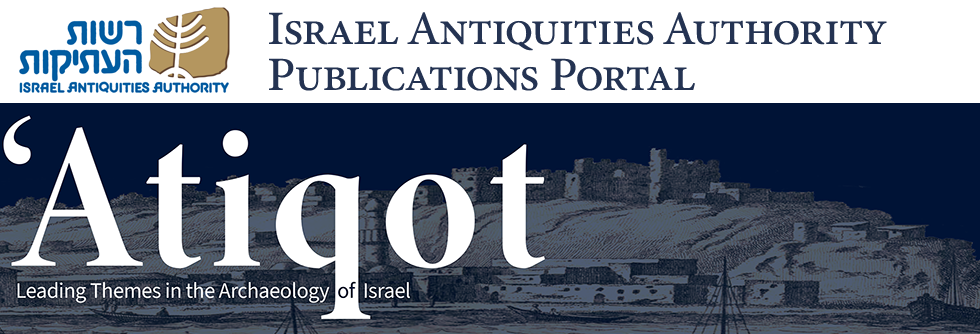Nahal Rimmonim: An Intermediate–Middle Bronze Age Village and Pottery Workshop in the Jezreel Valley
Abstract
The excavations at Naḥal Rimmonim exposed a stratified rural settlement spanning the Intermediate and Middle Bronze Age III. Stratified remains—including domestic structures, installations, a pottery workshop and burials—demonstrate diachronic shifts in site function and organization. The Intermediate Bronze Age strata exhibit substantial domestic activity with evidence of localized adaptation to marshy conditions. In the Middle Bronze Age I–II phases, a specialized potters’ workshop and later domestic structures highlight evolving intrasite spatial planning and craft production, likely tied to economic interactions with nearby Tel Megiddo. Elite tombs with prestige goods from the Middle Bronze Age III, signal socioeconomic ties to urban centers and international networks. The combination of utilitarian installations, household industries and ritual activity provides a rare insight into rural lifeways and mortuary traditions in the Jezreel Valley. This report contributes to ongoing discussions of community organization, technological specialization and burial practices in non-urban settings during the Bronze Age Southern Levant.
Keywords
Intermediate Bronze Age, Middle Bronze Age, rural settlement, Jezreel Valley, pottery production, burial, economy
Recommended Citation
Covello-Paran, Karen and Tepper, Yotam
(2025)
"Nahal Rimmonim: An Intermediate–Middle Bronze Age Village and Pottery Workshop in the Jezreel Valley,"
'Atiqot: Vol. 118, Article 10.
DOI: https://doi.org/10.70967/2948-040X.2322
Available at:
https://publications.iaa.org.il/atiqot/vol118/iss1/10
Included in
Agriculture Commons, Biblical Studies Commons, History of Art, Architecture, and Archaeology Commons

